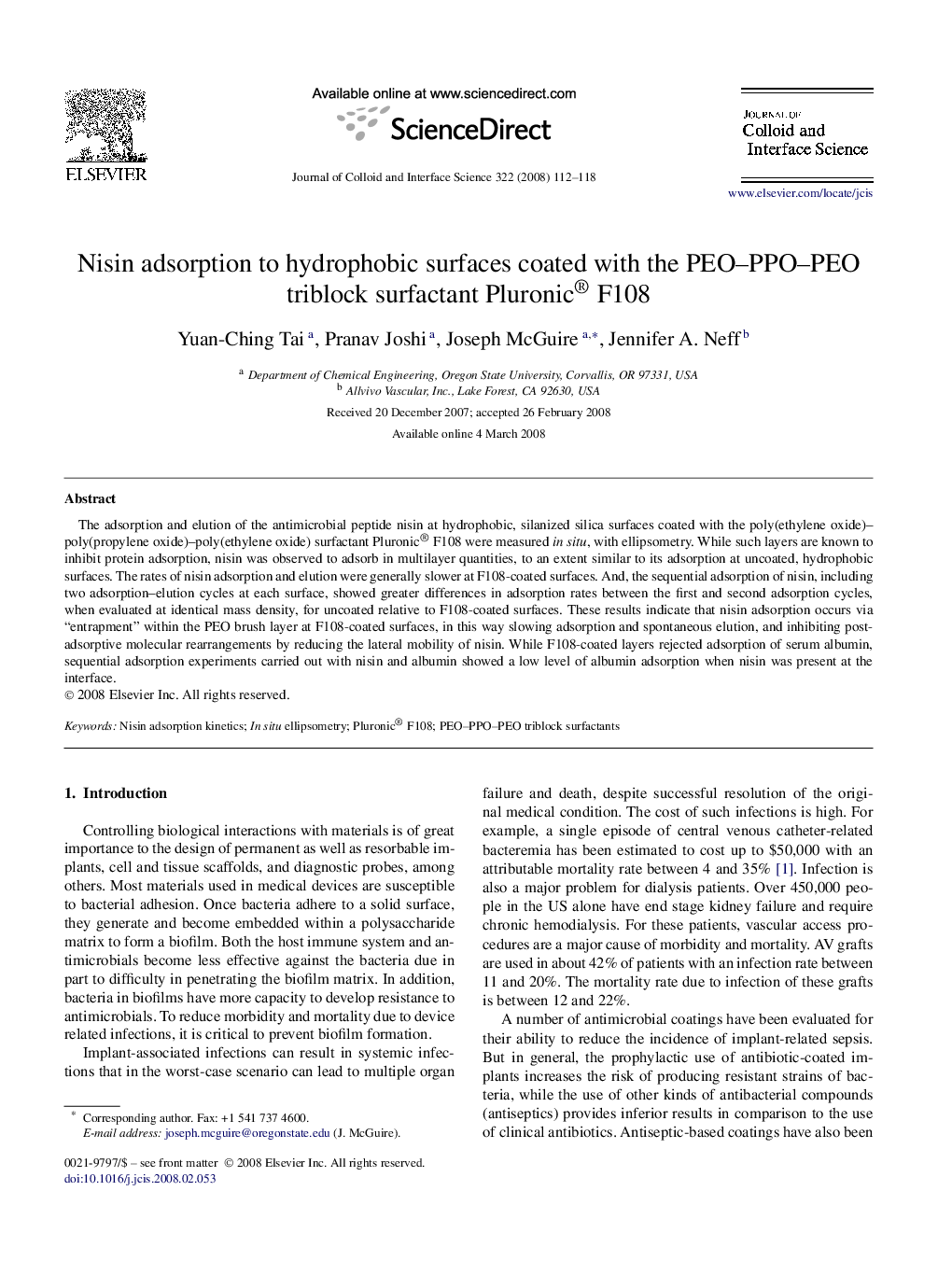| Article ID | Journal | Published Year | Pages | File Type |
|---|---|---|---|---|
| 611965 | Journal of Colloid and Interface Science | 2008 | 7 Pages |
The adsorption and elution of the antimicrobial peptide nisin at hydrophobic, silanized silica surfaces coated with the poly(ethylene oxide)–poly(propylene oxide)–poly(ethylene oxide) surfactant Pluronic® F108 were measured in situ, with ellipsometry. While such layers are known to inhibit protein adsorption, nisin was observed to adsorb in multilayer quantities, to an extent similar to its adsorption at uncoated, hydrophobic surfaces. The rates of nisin adsorption and elution were generally slower at F108-coated surfaces. And, the sequential adsorption of nisin, including two adsorption–elution cycles at each surface, showed greater differences in adsorption rates between the first and second adsorption cycles, when evaluated at identical mass density, for uncoated relative to F108-coated surfaces. These results indicate that nisin adsorption occurs via “entrapment” within the PEO brush layer at F108-coated surfaces, in this way slowing adsorption and spontaneous elution, and inhibiting post-adsorptive molecular rearrangements by reducing the lateral mobility of nisin. While F108-coated layers rejected adsorption of serum albumin, sequential adsorption experiments carried out with nisin and albumin showed a low level of albumin adsorption when nisin was present at the interface.
Graphical abstractThis paper describes adsorption and elution behavior of the lantibiotic nisin at surfaces coated with pendant, PEO chains. The schematic illustrates nisin “entrapment” in a PEO–PPO–PEO triblock layer.Figure optionsDownload full-size imageDownload as PowerPoint slide
